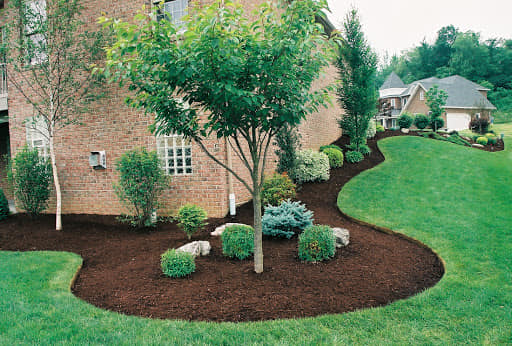%201%20(1).webp)
%201%20(1).webp)

The Importance of Quality Pavement Maintenance


Common Problems with DIY Landscape Installations in Westerville
DIY landscaping can feel rewarding at first until uneven ground, yellowing plants, and surprise drainage issues start to show. Many Westerville homeowners begin these projects with the best intentions, hoping to design and install a landscape that adds beauty to their yard and value to their home. But without the correct planning, tools, or understanding of how each landscape component functions as a system, small mistakes can lead to repeating tasks, additional costs, and ongoing frustration.
Taking shortcuts or relying on internet tutorials may seem like a way to save money, but poorly installed landscaping features can seriously affect how well your yard handles water, supports plant growth, and looks over time. Summer is when many property owners in Westerville take on these tasks, but it is also when the problems caused by rushed or misinformed decisions come to light. Identifying the most common issues early can help homeowners avoid major setbacks and achieve more dependable long-term results.
Improper Soil Preparation
No matter how well plants are chosen or how clever a layout may look, it all falls apart without proper soil prep. Soil plays a central role in how well your landscape holds up. It impacts everything from root development and moisture retention to nutrient availability. A beautiful design means very little if the ground beneath it is not ready to support it.
One of the most frequent missteps in DIY landscaping is skipping a full soil assessment. Homeowners often assume a layer of topsoil is enough, but there can be underlying problems like compacted subsoil, buried construction debris, or poor pH balance. These issues can stop plant roots from expanding properly or cause water to pool at the surface rather than drain through. Over time, this leads to weak growth, patchy lawns, and garden beds that do not thrive despite regular attention.
Failing to till the soil or mix in organic matter is also a common issue. Without those steps, hard-packed areas can limit air and water flow underground, which directly affects how your plants absorb nutrients. The result is often stunted or irregular growth. For example, front yard flower beds may bloom on one end while the other side remains sparse even though the setup looks identical from above.
Landscaping projects must begin with a clear understanding of what lies beneath the turf. Testing soil structure, grading for proper slope, and preparing the area with the right mix of materials provides a stable, healthy foundation. Skipping these details now usually leads to extra labor later.
Inadequate Watering Systems
Many homeowners think watering is as simple as turning on a hose, but landscape needs vary widely across yards and plant types. DIY watering setups often fall short because they do not account for coverage, consistency, or the natural flow of water.
Here are some common DIY watering mistakes that lead to underperforming landscapes in Westerville:
1. Using sprinklers meant for open lawns to cover mixed plant beds, leading to overwatering of some zones and neglect in others
2. Installing drip hoses or timers with no pressure regulation, which causes uneven distribution of water
3. Placing emitters too far from plant root zones, making it harder for plants to absorb enough moisture during hot periods
4. Not adjusting watering schedules based on rainfall or season, which either wastes water or starves plants when it matters most
These issues can show up fast during late summer. Wilting leaves, hard soil crusts, or fungal growth near tree trunks often point to watering imbalances. It is not always about how long or often water is applied. The real concern is how effectively it reaches each plant's roots without runoff or waste.
A well-planned irrigation system takes into account slope, sun exposure, soil porosity, and plant selection. While the appearance of a lawn might improve slightly with regular hose watering, long-term plant health and water conservation require a smarter setup right from the beginning.
Incorrect Plant Placement
Plant selection and positioning can affect both the look of a landscape and how well it holds up during different seasons in Westerville. Even if you pick all the right types of plants, putting them in the wrong spots can cause major issues over time. This step involves much more than lining up flowers or shrubs where they look good at the moment.
One common issue with DIY setups is overcrowding. At the time of planting, everything fits nicely. But within a year or two, the area becomes overrun. Shrubs can choke each other out, trees can block sunlight from nearby plants, and roots start fighting for water and nutrients. When plants do not have enough space to grow properly, they are far more prone to disease, weak flowering, or even complete dieback.
Another problem is mismatching plants with their environment. Sun-loving flowers placed in consistently shaded areas tend to stretch awkwardly or lose color. At the same time, shade-loving plants exposed to full sun often brown out or dry up. Westerville’s mix of shady and open yards makes this mistake pretty common when homeowners do not track sun patterns across the day.
Improper plant layout can also make maintenance harder. For example, tall grass or hedges placed in tight front corners can block mower paths or restrict visibility from driveways. Spacing and layering come into play—low-growing plants in front, tall ones in the back, and enough clearance around each type for air and tools to reach.
To avoid these placement issues:
1. Study how much sunlight each section of your yard gets throughout the day
2. Choose plants that thrive in those lighting conditions
3. Space plants based on their full-grown size, not their current appearance
4. Avoid crowding around structures or your foundation
5. Group plants with similar watering needs to prevent over or under watering
Plant layout may seem simple when looking at photos online, but every yard has different soil, light, and drainage variables that directly affect long-term success.
Failure To Address Drainage Issues
One of the most overlooked parts of landscaping is how water will move through the finished project. Poor drainage is a major cause of damage, from soggy spots in lawns to cracked foundations near patios or walkways. It is not always easy to detect during the dry parts of summer, but the effects become obvious once Westerville gets a strong rain.
DIY installations frequently skip slope grading, underground drain pipes, or swales. Instead, homeowners might rely on surface-level fixes meant only for short-term use. Even decorative features like edging stones, planters, or borders can block water from moving naturally, which adds to the problem.
If your landscape cannot drain correctly, water starts to collect around the base of plants and structures. That moisture brings rotting roots, attracts pests, and increases the risk of mold or mildew growth. Over time, it can even weaken soil under paved surfaces, leading to cracking or settling.
Another sign drainage was missed during installation is when mulch washes away after storms or low points in the yard stay flooded for days. These are not just cosmetic problems. They point to bigger design flaws that could cost more to fix later.
Taking time to analyze the natural grade of the yard, installing proper downspout extensions, or integrating gravel channels during installation helps prevent water issues down the line. Ignoring them from the start leads to more intensive repairs that could have been avoided with proper ground prep and drainage planning.
Ensuring Lasting Beauty and Functionality
When a DIY landscaping project begins, most homeowners are focused on how the final result will look. But long-term function should be just as much of a priority. Soil that drains poorly, mismatched plants, and awkward watering systems will all begin to show problems after the first season. In some cases, the entire layout has to be reworked within a year.
Trying to manage all aspects of landscaping without proper training can lead to wasted money, lost time, and a yard that falls short of expectations. Though it is tempting to rely on free design ideas or work off neighbor feedback, every property in Westerville has unique challenges that need specific solutions.
Making sure your landscape works well and looks good over time means understanding the different layers of a yard—what is underground, how water moves, and how each plant will grow and respond in that space. The right planning, preparation, and technical skill up front can make all the difference in creating a space that lasts.
For dependable results with landscaping in Westerville, working with trained professionals gives you the assurance that every detail is handled properly from day one. Whether it is soil, drainage, plant choice, or layout, the right team will deliver a yard that not only looks great but functions as it should for years to come.
If you are experiencing setbacks with your yard due to improper soil preparation, inconsistent watering, poor plant placement, or drainage challenges, consider a professional solution that supports a lasting outdoor space. At Professional Pavement Services, our team is ready to help you achieve a resilient landscape that stands up to Westerville weather. Learn more about landscaping in Westerville and discover how our experienced professionals can transform your property. For a quick estimate or to book a service visit, please contact us today.
Recent Posts

Join Our Community of Readers
Stay updated with our latest insights and share your thoughts with us in the comments!


.svg)












.png)




